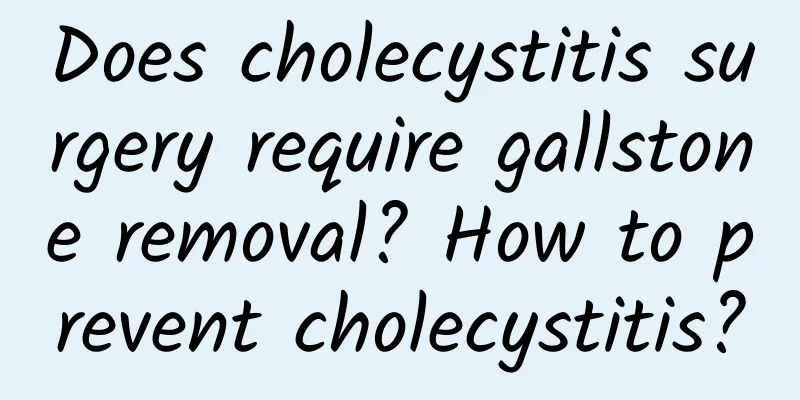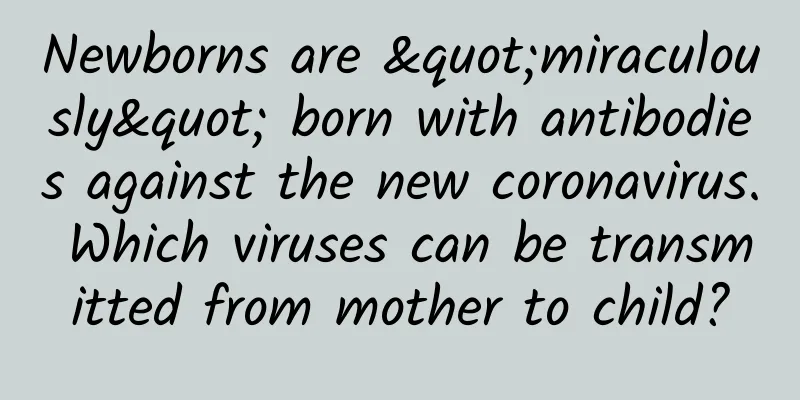Does cholecystitis surgery require gallstone removal? How to prevent cholecystitis?

|
Cholecystitis is mostly caused by gallstones in the gallbladder, which causes obstruction. There are acute and chronic types of cholecystitis. To completely cure cholecystitis, surgery is the most feasible method. Does this mean that the gallbladder must be removed together? Not necessarily. Let's find out. Does cholecystitis surgery require gallbladder removal?uncertain. Cholecystitis is divided into calculous cholecystitis and acalculous cholecystitis. Calculous cholecystitis accounts for about 95%. After being diagnosed with calculous cholecystitis, the most effective treatment is surgical removal of the gallbladder. Stones can be large or small, with the largest reaching 1 cm or even larger, and the smallest being muddy and sandy. However, our cystic duct is very thin, with a diameter of only 0.2-0.4 cm. Stones larger than the diameter of the cystic duct are almost difficult to be discharged. Stones smaller than the diameter of the cystic duct will pass through the common bile duct and the common opening of the common bile duct and the pancreatic duct in sequence after being discharged. During the descent, they may get blocked in the common bile duct, causing common bile duct stones, or they may get blocked in the common opening of the common bile duct and the pancreatic duct, causing pancreatitis. Therefore, after the diagnosis of calculous cholecystitis, if the patient can tolerate the surgery and conditions permit, the gallbladder should be removed surgically as soon as possible. Acalculous cholecystitis accounts for only about 5%, but it is more dangerous. Because acalculous cholecystitis is more prone to gangrene and perforation, after diagnosing acalculous cholecystitis, the patient should choose the surgical method according to his or her own situation, which can be surgical removal or cholecystostomy. Some patients with calculous cholecystitis will get better after conservative treatment. However, if the disease recurs repeatedly, surgical treatment should be performed, because repeated attacks of cholecystitis will cause adhesions with surrounding tissues. This will make the attacks of cholecystitis more frequent, and surgical treatment will eventually be chosen. Moreover, adhesions will increase the difficulty of surgical operation. In the early stage, there may be a chance to remove the gallbladder through laparoscopy, but in the later stage, the gallbladder may only be removed through open surgery. Therefore, patients with chronic cholecystitis are recommended to have surgical treatment as soon as possible. How to prevent calculous cholecystitis1: Avoid fried and high-fat foods: Foods with high fat content can increase bile secretion and stimulate the contraction of the gallbladder. Many patients with acute cholecystitis seek medical attention because of acute and persistent abdominal pain after eating high-fat foods. Therefore, patients with cholecystitis and gallstones must avoid fatty meat, fried eggs and other foods. 2: Quit drinking: Alcohol can also stimulate increased bile secretion and gallbladder contraction. Long-term and heavy drinking can also lead to acute pancreatitis. 3: Regular diet: Many people do not eat on time, which results in the bile deposited in the gallbladder not being discharged in time, making the bile viscous and more likely to form stones. 4: Water quality problem: Most of the drinking water nowadays is filtered and purified by water purifiers, but there are no water purifiers in remote rural areas, and the water quality is even worse. Sometimes the water is the yellow color of mud. Drinking such water for a long time can easily lead to the occurrence of gallstones. In what cases is gallbladder removal necessary?1. Acute suppurative, gangrenous, and obstructive cholecystitis. 2. Recurrent chronic cholecystitis. 3. Symptomatic gallstones or gallstones with complications (such as concurrent gallbladder perforation, hydrops or pus in the gallbladder, secondary common bile duct stones, cholecystoenteric fistula, cholelithiasis pancreatitis, etc.). 4. Gallstones larger than 2 cm, patients with diabetes or asymptomatic gallstones in the elderly. 5. Single gallbladder polyp larger than 1 cm, gallbladder polyp located in the neck of the gallbladder, or combined with other gallbladder diseases (such as gallstones, cholecystitis, etc.). 6. Gallbladder cancer. 7. Traumatic gallbladder rupture. |
<<: Why doesn't jasmine bloom? What should I do if jasmine only grows leaves but doesn't bloom?
Recommend
Trouble sleeping at night after pregnancy
For many families or some couples. Pregnancy can ...
What should not be eaten when there is less amniotic fluid
We all know that pregnant mothers need to do many...
How to eat dumplings that are severely frozen into a lump? Do you need to blanch garlic sprouts before making dumplings?
Dumplings were invented by Zhang Zhongjing, a nat...
Why do pregnant women suffer from anemia?
Pregnant women will experience many phenomena dur...
Is there anyone who has cured cervical cin3?
Cervical CIN3 is cervical intraepithelial neoplas...
Black blood clots in menstruation after the Qing Dynasty
If you do not take necessary contraceptive measur...
How many months of normal intercourse will lead to pregnancy
The first condition for pregnancy is that the egg...
Using the air conditioner incorrectly puts you in the ICU! The unknown secrets of air conditioning can help you avoid getting sick
The weather is getting hotter and hotter, and man...
How many days can pubic lice be cured?
It is usually a disease that is very easy to occu...
Can I eat Achyranthes bidentata during menstruation?
Maybe everyone in western Liaoning is not very fa...
Precautions during early pregnancy
The early stages of pregnancy are the most danger...
What are the exercises for female vaginal tightening?
Women are a relatively special group because they...
What is the reason for early menstruation every month?
Generally speaking, women's menstruation come...
Why is the cervix open?
When your cervix opens, it means you are about to...
What kind of fruit is plum? Is plum an apricot?
Plums are rich in a variety of organic acids, inc...









